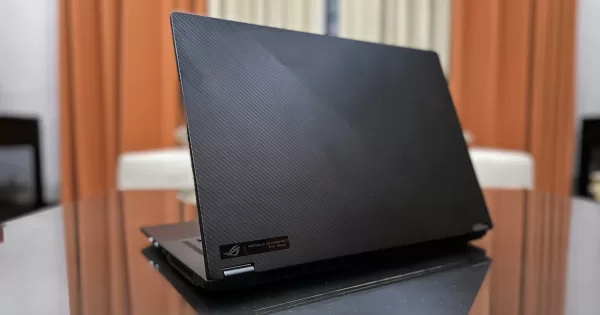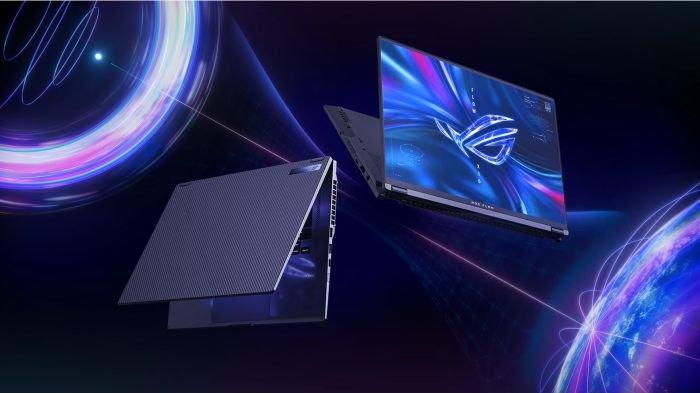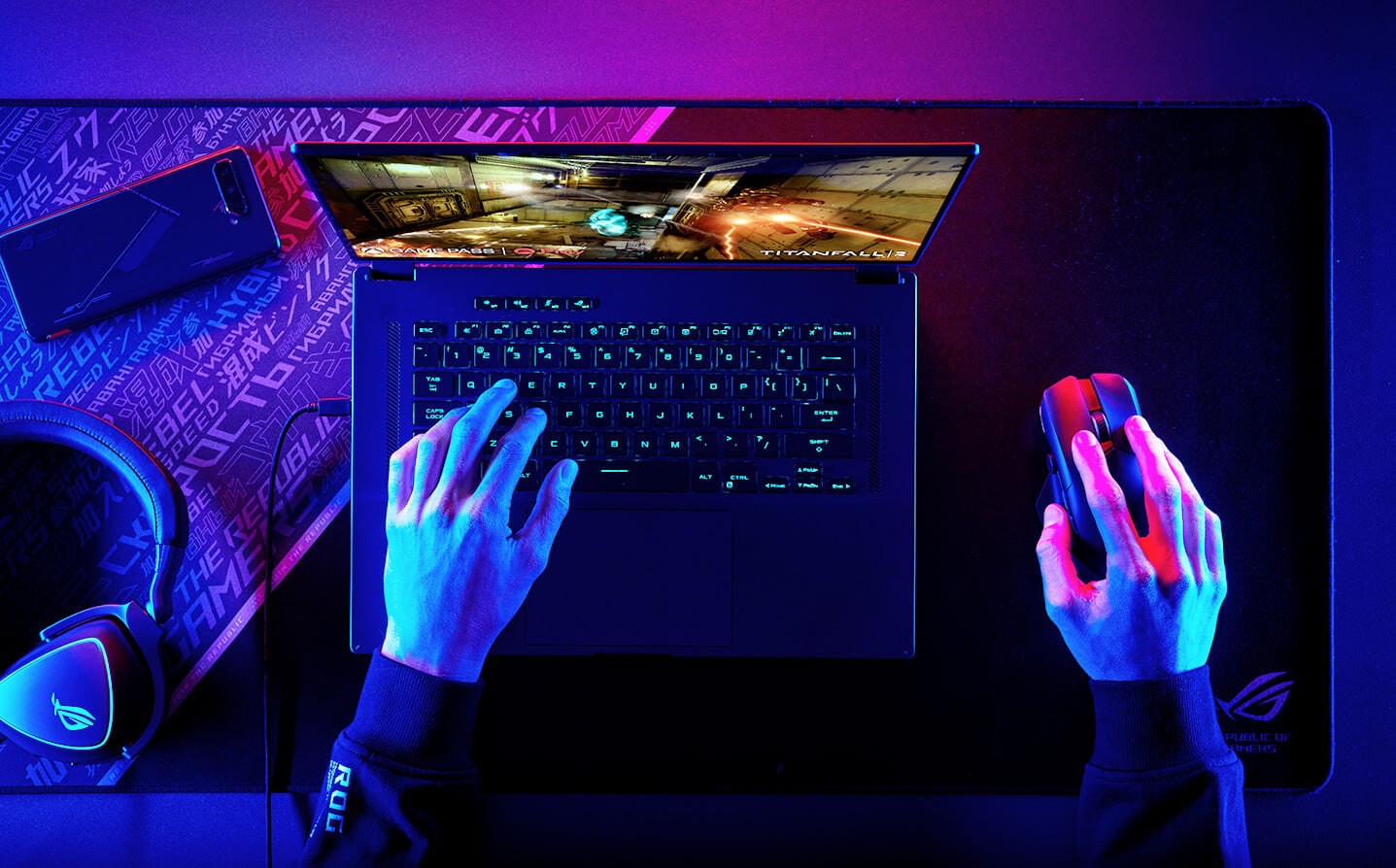Asus ROG Flow X16: Is It Worth It in 2023?
Nearly one year later, is the Asus ROG Flow X16 still worth getting? Here is what we think of this gaming laptop from ROG.

The Asus ROG Flow X16 is an impressive piece of tech from last year. I’ve been spending significant time with it over the past few months as my main device for all things laptop gaming and a bit of work as well. Nearly one year later, is it still worth getting? Here is my full ROG Flow X16 review.
The Flow X16 2022 series is powered by AMD processors and Nvidia graphics. For the unit I’m reviewing, it contains a Ryzen 9 6900HS with Radeon Graphics and a GeForce RTX 3080 Laptop GPU. We were also provided an ROG XG Mobile, an extremely portable yet powerful eGPU that’s powered by an AMD Radeon RX 6850M XT that can be upgraded should you wish. It’s a pretty beefy setup.
But you’ve probably heard all the tech talk and discussions on the different specifications of the device. It is nearly a year old. I’m not here to talk about a technical deep dive. I want to talk more about how much the Flow X16 has stood the test of time. Now that we’re nearly halfway through 2023, a bunch of other laptops have already been announced and released. Do you really need to keep up with all of them? Let’s find out.
Form and function
Probably one of the most overlooked things about the Flow X16 that I absolutely love is just how simple and professional it looks. When I bring this outside to work on other things, it helps that I don’t look like I’m carrying around a gaming machine in a coffee shop or something. Yes, I do mostly use it for gaming purposes but it has a more subtle look to it that can fit both play and business times of my day. Other gaming laptops tend to be a little bit too “loud” about their aesthetics so the ROG Flow X16’s minimalist approach was really enticing for me from the beginning.
Black aluminum materials were used as the exterior chassis of the laptop while the main skeleton and interiors are built with magnesium alloy. While the keyboard area has a matte smooth surface, which feels nice and smooth to the touch, the palm rest and the back of the screen have textured finishes that give the device a better grip for carrying around.
The all-black design might raise a few concerns about smudges and fingerprints. It does get a lot of those but it’s not as evident given how the device leans more towards a matte black finish and the textured surfaces do make it seem like markings aren’t as noticeable even after days of use. It does help that I mostly use an external keyboard and mouse that I just connect to the laptop to keep it extra clean.
There are multiple RGB lighting options for the laptop keyboard. You can pick between preset colors or make your own custom shade as well. You can also choose different modes such as static, breathing, strobing, etc. It’s there for those who want it and you can easily turn it off as well.
As a person with big hands, I do love how the palm rest and the click pad are pretty spacious offering a lot of real estate for movement. The two speakers nestled on both sides of the keyboard also sound great.
The ones that don’t look and sound great in particular are the camera and microphone. The ROG Flow X16 has a pretty bog standard 720P HD IR Camera that doesn’t look all that great. Photos and videos always look slightly blurry. Much like the microphone, the camera is as basic as it gets. They do get their job done if you really need to use a camera for a video call or something similar but you’re better off just taking the meeting with another device if you want to look a bit more presentable. As for the mic, it’s impossible at this point that you don’t have your own pair of head or earphones so that shouldn’t be too much of a problem.
Carrying this around is as easy as it gets as the ROG Flow X16 weighs at only slightly above 2 kilos—a lighter load compared to other gaming laptops which is more impressive considering the amount of firepower this one has.
Power on the go
Of course, one of the main reasons why you would even get a laptop of this quality is how powerful it can be as a gaming machine. While good performance is one thing, it’s also a question of whether or not the Flow X16 can handle long hours of play sessions.
For the longest time, I was always a console gamer. I looked at PC gaming to be an intimidating venture given the number of factors I have to consider. At least when purchasing a console, I know that for the most part, nearly every game I play on it will run smoothly. I don’t have to worry about specifications, outdated parts, driver updates, poor optimization of ports, etc.
When I first got my hands on the ROG Flow X16, I was immediately impressed at just how stunning the screen is. It has a massive 16:10 convertible Nebula HDR DisplayTM with Mini LED offering QHD 165Hz/3ms, Pantone® Validation, and 100% DCI-PC coverage. Visuals are sharp, clean, and smooth no matter what I’m doing.
The ROG Flow X16 is no slouch when it comes to running games. I’ve been running system-intensive titles such as Destiny 2, Halo Infinite, Borderlands 3, Death Stranding, and Diablo IV at consistent 80-120 frames on medium to high settings. The gaming experience feels smooth and intuitive. With the Nvidia graphics card, enabling DLSS on certain titles do wonders in boosting its performance with barely any cost to visual fidelity. In terms of gaming on the go, the ROG Flow X16 is phenomenal.
In my first couple of months using it, I wasn’t aware that I was actually on 4K resolution on both the laptop and the games I was playing. While it was undeniably beautiful to look at, I just thought 1080p was more than enough for what I was doing. After lowering the resolution, game performance, temperature, and fan sounds started to get even better.
Speaking of which, how hot or loud does the ROG Flow X16 get? The laptop does have intelligent cooling capabilities with Frost Force Technology and a unique Pulsar Heatsink. Temperatures are, for the most part, kept in check due to Thermal Grizzly liquid metal thermal compound, a unique Tri-fan thermal module, and the ability to stay completely silent with 0dB Ambient Cooling. However, for intense gaming and work sessions, it does get a little bit loud and hot, especially on the former.
While it’s not alarmingly problematic, it’s still there. For all its impressive features packed into one portable package, it is still just a gaming laptop and not a dedicated rig. The 3-fan setup should give you more than enough reassurance that the ROG Flow X16 is doing its best to keep everything at an ideal temperature state. I’ve had moments where I was using this on a hot summer day with only an electric fan and it was still performing exceptionally well.
Popping on a pair of earphones or a headset should eliminate the distracting sounds of the fan noise when it starts to kick up. As always, it is recommended that you place the laptop on an elevated stand top assist with its airflow. And if you have the extra money for it, plugging in the ROG XG Mobile eGPU does wonders in helping share the load and lower temperatures and fan noises.
In terms of the ROG Flow X16’s battery life, standard use gives me around 5-7 hours for normal work until I have to plug it in. In terms of gaming, that number drastically plumits to about 2-3 hours if you’re lucky. It is never advisable to game while it is unplugged from the charger anyways.
The ROG Flow X16 is an impressive beast of a machine that you can just carry around in your backpack. While there are cheaper laptops out there that can do nearly all of what this is offering as well as other tablets, the real value of the ROG Flow X16 is its capability to be both. In just a matter of seconds, this thing can turn into a laptop or a tablet. Whether you are working, gaming, watching, etc., the Flow X16 is all that you need and more.
The Asus ROG Flow X16 is versatile, powerful, upgradable, and portable. What more can you ask for?





